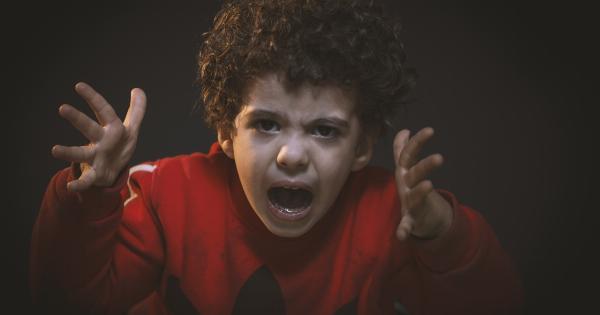As children grow and develop, they experience a range of emotions and learning to manage those emotions is an important part of their development. One of the most challenging emotions that children may experience is anger.
Anger is a natural emotion that all people experience, but it is crucial to teach children how to manage their anger in a way that is healthy and safe. Whether your child has just begun to experience anger bursts or they have been struggling with this for some time, there are effective techniques that can help you manage your child’s anger and promote emotional growth.
In this article, we will explore some of the most effective strategies for managing your child’s anger bursts.
Teach Your Child About Emotional Regulation
One of the most important techniques for managing your child’s anger bursts is to teach them about emotional regulation. Emotional regulation involves the ability to understand and manage emotions in a way that is healthy and productive.
Children who lack emotional regulation are more likely to display impulsive behaviors and struggle to manage their emotions, resulting in more frequent anger outbursts and difficulties in social situations. By teaching your child about emotional regulation, you can help them better understand their emotions and learn healthy ways of expressing them.
Encourage your child to communicate their emotions
It is important to encourage your child to communicate their emotions to you or a trusted adult when they feel angry. This can be done through active listening and by validating their feelings.
When your child expresses their anger in a calm manner, listen to what they have to say and try to validate their feelings. For example, you can say “I understand you are feeling frustrated right now, but shouting and hitting your sibling is not the right way to show your emotions”.
Teach your child to recognize the “warning signs” of anger
When someone is feeling anger, there are tell-tale signs that they are about to experience an outburst.
By teaching your child to recognize these warning signs, you can help them start to identify their triggers and manage their emotions more effectively. The warning signs may include raised voice, clenched fists, sweating, and an increased heart rate.
When your child starts to recognize their own warning signs, they can start practicing different coping techniques or approach their caregivers for support.
Practice calm-down techniques
When your child is experiencing an anger burst, they may benefit from practicing calming techniques to help restore their sense of calm and control. These techniques may include deep breathing, visualization, and muscle relaxation exercises.
Practicing these techniques daily can help your child feel more calm and controlled in their everyday life and be more effective in managing their anger when the time comes.
Help them to find healthy outlets for their anger
Another effective technique for managing your child’s anger bursts is to help them find healthy outlets for their emotions.
Depending on their interests and hobbies, this may include sports, dancing, painting, playing a musical instrument, or even writing. These activities allow your child to express their emotions in a healthy way and provide an outlet for their anger.
Set clear and appropriate boundaries
It is important to set clear and appropriate boundaries with your child when it comes to expressing their anger. This can include setting rules about not using physical violence or abusive language when expressing their anger.
It is also important to establish consequences for breaking these rules, such as time-outs, loss of privileges, or apology letters. By setting clear boundaries, your child will learn that they are accountable for their actions and will be less likely to have an outburst.
Avoid provocative situations
As a caregiver, it is important to avoid situations that can provoke your child’s anger.
For example, if your child becomes easily frustrated when they have to share toys, consider setting up playdates where there are enough toys for everyone to use. Avoiding these situations can help prevent an outburst from occurring in the first place.
Seek professional support if needed
With all that goes on in our daily lives, sometimes we may fail to notice when our children seriously need help.
If you feel that your child’s anger bursts do not seem to be improving even after you have tried the above techniques, it may be time to seek professional help. Seek out a therapist or counselor who specializes in child psychology and can help your child develop skills to manage their anger in a healthy and safe way.
Lead by example
It is important to model healthy emotional regulation and effective anger management techniques for children. Children tend to learn more from what they see their parents do than what they are told to do.
As a caregiver, it is crucial to lead by example in this area and practice good emotional regulation yourself. This can include taking deep breaths and seeking professional help if needed.
Final thoughts
Managing a child’s anger bursts can be a challenging task, but with the right techniques and approaches, it is possible to help your child regulate their emotions in a healthy and safe way.
Remember that every child is unique, and what works for one may not work for another. Be patient and persistent when teaching your child anger management techniques and be sure to lead by example. With time and practice, your child will develop the skills they need to manage their emotions effectively.






























